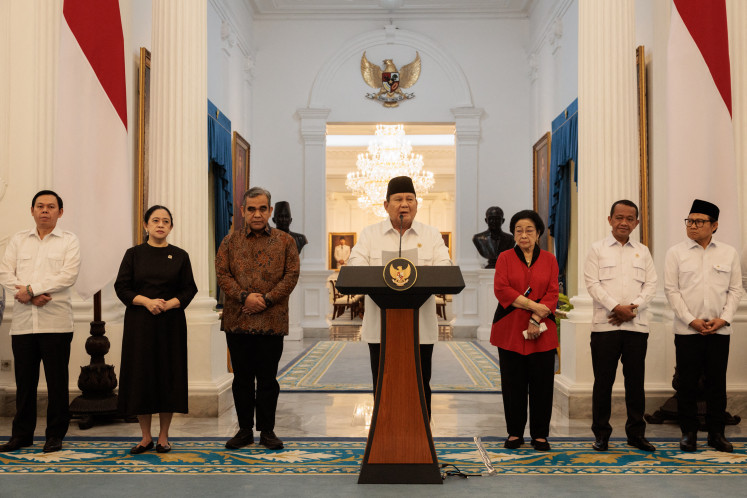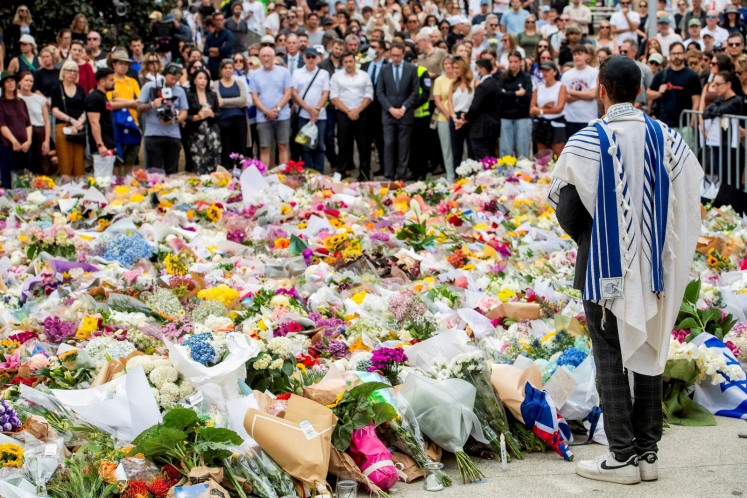Popular Reads
Top Results
Can't find what you're looking for?
View all search resultsPopular Reads
Top Results
Can't find what you're looking for?
View all search resultsC0VID-19 changes Southeast Asia’s consumers
Our analysis of buying patterns of 8,600 consumers in six Southeast Asian countries found that while 47 percent of consumers decreased offline purchases, 30 percent increased their online spending.
Change text size
Gift Premium Articles
to Anyone
W
hile COVID-19 may be among the most devastating of all black swan events to hit Southeast Asia, it by no means is the first – and like previous crises in the world, it is introducing long-lasting changes to consumer behavior and digital adoption.
Now, C0VID-19 is moving consumers online faster than consumer goods companies thought was possible. Among the biggest consequences: the pandemic is hastening development of digital ecosystems in which consumer goods companies partner with food delivery services, online marketplaces, gaming companies or others for everyone’s benefit. It also is showing businesses how to adapt their playbooks - and some are making the thoughtful, agile moves that will help them maintain strong footing both today and for a post-C0VID world.
Bain and Facebook have been studying the exponential growth of digital consumer behavior in Southeast Asia for three years. As we move into the second half of 2020 and the next normal, we examine what has changed, what hasn’t changed and consider what the future will look like for companies.
COVID-19 is intensifying the move online and serving as a catalyst for important changes. Online purchasing, digital consumption and average online basket size all have risen substantially and will continue to grow at record-setting rates, providing an opportunity for traditional businesses, large marketplaces and disruptive business models to thrive.
Virtually overnight, COVID-19 has led consumers to alter their spending habits. Worried consumers stockpiled basic goods, looking for value and trusted brands. They cut back on apparel and consumer electronics. And, in record numbers, they started buying online. Our analysis of buying patterns of 8,600 consumers in six Southeast Asian countries found that while 47 percent of consumers decreased offline purchases, 30 percent increased their online spending.
Our analysis helped us identify six critical themes in Southeast Asia among digital consumers who have made purchases online in the last six months.
“At home” and contactless here to stay. Working from home has delivered an unanticipated benefit: eliminating hours-long commutes from daily schedules has boosted productivity. When restrictions lift, many are likely to continue working from home. Southeast Asia’s digital consumers also report that they intend to stay at home for shopping and leisure more than they did pre-C0VID. The region’s consumers are 1.5 times less likely to dine out or visit a cinema than their counterparts in the US– a big cultural shift in a region where consumers were almost twice as likely as those in the US to eat out every day. Meanwhile, consumers in Southeast Asia are embracing innovative contactless services. Even in Southeast Asia’s cash-dominant markets, for instance, contactless payment platforms have achieved high growth in both users and transaction volumes.
Discovery of new apps accelerates. Southeast Asia’s consumers have never been shy about trying new apps. The Philippines is the world leader in the volume of text messaging. Jakarta has traditionally sent more tweets than New York, Tokyo, London or Sao Paulo. The pandemic has opened the region’s consumers up to more options.
During the pandemic, 77 percent of surveyed digital consumers tried a new app that they plan to continue using post-COVID-19. This spiked interest in social media, video and other digital options cuts across age groups and has caused companies to respond. For example, with more consumers using social media apps, social commerce is flourishing.
Essentials are moving online. Whether they are quarantined or fearful of contact with others, consumers across Southeast Asia are spending more online during the pandemic, with essential goods such as fresh or packaged grocery accounting for much of their purchases. Having shifted online, many now anticipate they will continue relying on e-commerce after the crisis ends. For example, roughly 83 percent of those shopping online are likely to continue their increased spending online after restrictions are lifted.
Value for money is a key consideration. Facing economic uncertainty, digital consumers now are more thoughtful about the purchases they make. As they stockpile or plan for an unstable future, they know what they want to buy and are turning their backs on splurges and impulsive spending.
Value for money is a key purchase criterion for 57 percent of Southeast Asia’s digital consumers. An average 60 percent of the region’s digital consumers say they plan to save more money in the future – they are nearly twice more likely than digital consumers in the US.
Reliable brands are on the rise. Southeast Asia’s digital consumers have always been open to trying new brands, with purchasing habits largely inspired by an openness to digital discovery. This year we looked closely at the types of brands these consumers buy and learned that they showed a strong preference for trusted and established brands. Forty two percent said they bought more established brands in recent months. Established brands have the consumer trust and robust supply chain to ensure their products are available and visible both in physical stores and online.
Another trend that is gaining momentum: consumers are more aware of the importance of their overall wellness. This comes at a time when digital services have made it cheaper to maintain health. More consumers have recognized the services available in telemedicine and digital health, for example. Also, many realize that anyone with an internet connection can take advantage of workout videos – it doesn’t require expensive gym or health club memberships. The renewed interest in well-being is reflected in consumption behavior.
When asked to prioritize their purchasing criteria, 39 percent of digital consumers in Southeast Asia cited health and wellness as a top priority. In the Philippines, 81 percent of consumers say they are likely to be more health conscious in the future.
Throughout the region, consumer goods companies that are likely to come out the strongest will be those that have adapted quickly to these long-lasting changes in consumer behavior and digital adaption.
***
Praneeth Yendamuri is Bain & Company partner based in Singapore. Dhruv Vohra is Facebook’s industry director for digital natives and technology.










